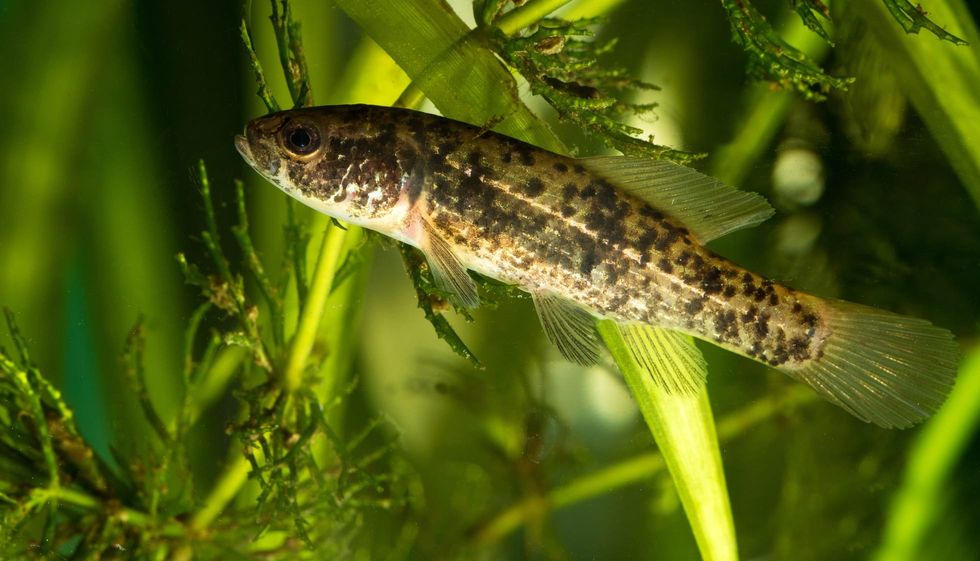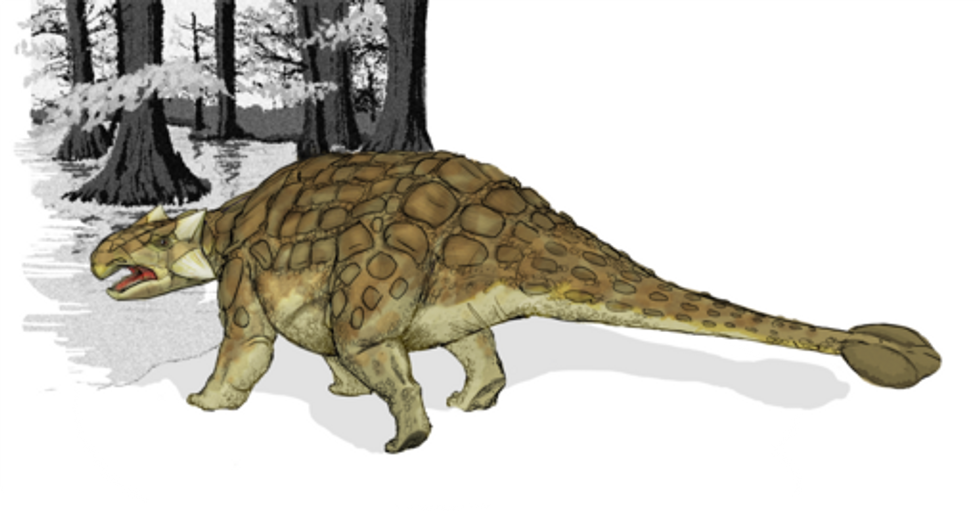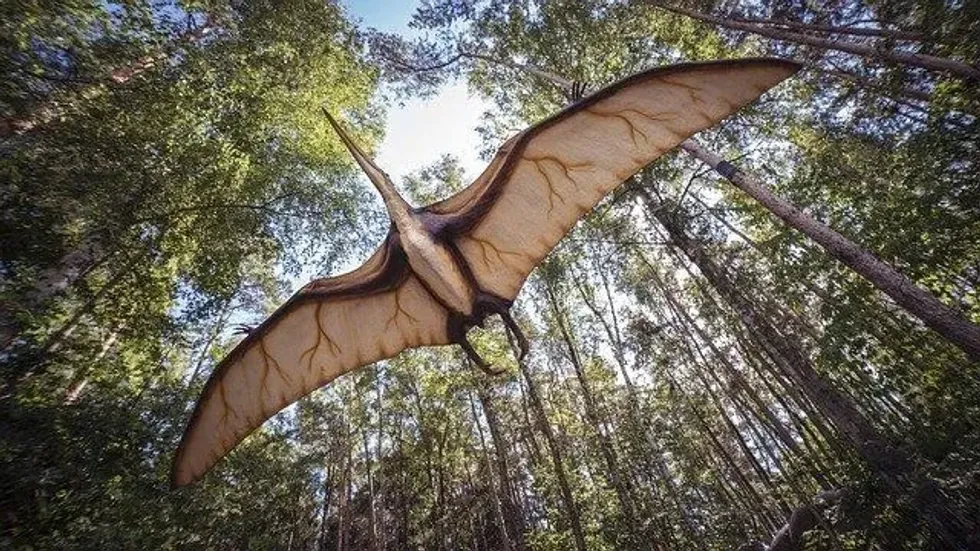The Umbridae is a family of fish belonging to the Esociformes order which mostly consists of mudminnows. This order has four genera but Boltyshia, Proumbra, and Palaeoesox have gone extinct.
Presently, the Umbra genus has three types of species of mudminnow fish with the species names being - Umbra krameri (European mudminnow), Umbra pygmaea (Eastern mudminnow), and Umbra limi (Central mudminnow). These fish are distributed across North America and Europe. Mudminnows belong to the superorder named Protacanthopterygii (Esociformes order) but their chromosome number may vary.
These fishes derive their name from their habit of burrowing their heads and entire bodies tail-first into the mud for aestivation. They remain dormant to survive extremely hot and dry weather and can also survive in extremely cold temperatures. They have unique a unique respiratory system that helps them adapt to really cold water with low levels of oxygen.
The Eastern mudminnow was introduced to Europe for bait in aquariums and their presence in European waters is considered to be invasive and potentially disturbing to European mudminnows.
Keep reading for more amazing facts about the Umbridae! If you like this article with some great facts about the Umbridae, you can also check out the other articles with fascinating facts about the sprat and clownfish.
Umbridae Interesting Facts
What type of animal is an Umbridae?
The Umbridae is a family of fishes belonging to the order of Esociformes.
What class of animal does an Umbridae belong to?
The members of the Umbridae family belong to the Actinopterygii class of animals.
How many Umbridae are there in the world?
The exact population of mudminnows in the world has not yet been recorded by researchers. However, the population trend of Umbra pygmaea and Umbra limi are considered to be stable while the population of Umbra krameri is considered to be declining.
Where does an Umbridae live?
The European mudminnow is found in Eastern European countries such as Austria, Bulgaria, Croatia, Bosnia and Herzegovina, Serbia, Slovenia, Czech Republic, and Ukraine.
The Central mudminnow is found in the Eastern and Central regions of North America around the city of New York from Lake Erie to Lake Ontario.
The Eastern mudminnow is found in areas such as New York and Georgia in North America but they have also been introduced to European countries like Denmark, Germany, Poland, and Belgium.
What is an Umbridae's habitat?
The preferred habitat of mudminnow fish (order Esociformes) is freshwater habitats such as ponds, streams, lakes, and wetlands. One of the most unique Umbridae characteristics is that these fishes can adapt to very poor aquatic habitats with low pH levels, oxygen levels, and temperature.
Who do Umbridae live with?
Mudminnows are shoaling fish which indicates that they are social fish rather than solitary ones. They prefer to stick together in the water as it also decreases their chance of being preyed upon.
How long does an Umbridae live?
The Central mudminnow has been seen to have an average lifespan of around seven to nine years.
How do they reproduce?
Eastern mudminnows display complex courtship behavior. The male fish shake their body and show their fins to the females during mating. They also build the nests while the females guard them.
Central mudminnows mostly lay eggs in Spring during mid-April when the temperature is quite warm. The females can produce approximately 2500 eggs in one instance and the eggs hatch into larva after six days.
What is their conservation status?
The Umbridae family consists of three species with their own unique conservation status according to the International Union for Conservation of Nature (IUCN). According to the IUCN Red List, Umbra krameri has been listed as Vulnerable while Umbra limi and Umbra pygmaea have been listed as Least Concern.
The population of Umbra krameri is facing a decline due to the degradation of their habitat and predation by Chinese sleeper (Perccottus glenii).
Umbridae Fun Facts
What does an Umbridae look like?
An Eastern mudminnow is a stout fish with an elongated body that is mostly brown or yellow in color. It has 10 or more lateral line faint stripes which are dark and narrow and are separated by light-colored bands. Its pelvic fin lies below its dorsal fin.
The Central mudminnow is dark brown and olive green in color with a pale belly. This fish also shows the Umbridae lateral line and has 14 vertical bars on its lateral surface which are dark brown in color.
The Umbridae scale type is cycloid and they are quite large.

We've been unable to source an image of an Umbridae and have used an image of its habitat. If you are able to provide us with a royalty-free image of an Umbridae, we would be happy to credit you. Please contact us at hello@kidadl.com.
How cute are they?
Mudminnows (Umbridae family) are not very cute. They are not colorful and are plain-looking.
How do they communicate?
Mudminnows are seen to use various channels of communication including tactile cues and their olfactory senses. They also take the help of visual cues during shoaling.
How big is an Umbridae?
The average length of mudminnow fish (order Esociformes) is between the range of 3-6 in (7.5-15 cm). A mandrill is almost 10 times the size of a mudminnow as it can grow up to 30 in (75 cm) in height!
How fast can an Umbridae swim?
While the exact speed of the mudminnow while swimming is not known, studies show that they prefer not to swim in fast-moving waters and cannot tolerate high turbidity. This would imply that they cannot swim very fast.
How much does an Umbridae weigh?
The weight of the fishes in this family has not yet been evaluated or recorded by researchers.
What are the male and female names of the species?
There are no distinct terms used to refer to a male and female mudminnow. Thus, they are usually denoted as male mudminnow and female mudminnow.
What would you call a baby Umbridae?
A baby mudminnow does not have a specific, unique name. They are hatched in the form of larvae and when they grow a bit, they are usually referred to as fry. The fry then develops further into a juvenile or young fish.
What do they eat?
Mudminnows change their diet based on what is available to them during each season. They mostly eat small invertebrates such as insect larvae, worms, shrimps, and krill. They are also seen to hunt smaller fish and snails.
Are they poisonous?
The limited scientific study (including those from Umbridae Fishbase) on mudminnows which belong to the family Umbridae and order Esociformes show that they are not poisonous in nature.
Would they make a good pet?
According to Fishbase, mudminnows would make a very good pet to keep at home if you plan on keeping them at home aquariums. Due to their ability to tolerate low levels of oxygen in the water and their hardiness, they can easily live in aquariums.
Did you know...
Umbridae mudminnows have the unique ability to survive under ice during very cold winters when the water temperature drops quite low in certain areas.
According to Fishbase, during times of drought, these fish burrows themselves in mud to survive. Since they have a modified gas bladder, they can absorb oxygen by breathing in atmospheric air - a feature that most other fish species lack.
A different kind of minnow fish known as the spottail minow or spottail shiner (Notropis hudsonius) shows an amazing physical change during the breeding season. The male shiner minnows turn into a deeper golden color which is why they are also known as Golden shiners.
Do they bite?
According to Fishbase, mudminnows are not known to bite human beings and are not dangerous. Rather, they are used as bait for fishing.
Do humans eat them?
Mudminnows are different from minnow fishes which belong to the family of Cyprinidae. While minnow fish can be eaten raw and was eaten by indigenous people in North America, mudminnows of the family Umbridae are not fit for human consumption. According to Fishbase, they are mostly used as bait for fishing and are not edible.
Here at Kidadl, we have carefully created lots of interesting family-friendly animal facts for everyone to discover! For more relatable content, check out these Chinese paddlefish facts and monkfish facts for kids.
You can even occupy yourself at home by coloring in one of our free printable Umbridae coloring pages.










